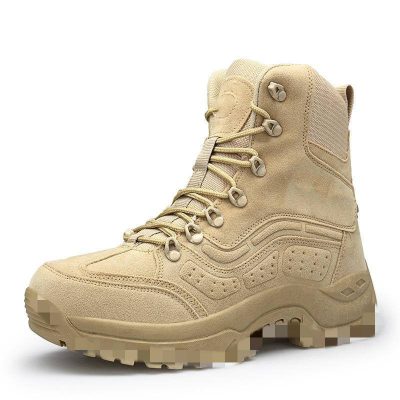Comparing leather and synthetic boot soles involves considering factors such as durability, traction, comfort, maintenance, and environmental impact. Here’s a detailed comparison:
Leather Boot Soles:
Pros:
- Durability: High-quality leather soles can be incredibly durable, especially when properly cared for and maintained.
- Flexibility: Leather tends to mold to the shape of the foot over time, providing a personalized fit and excellent flexibility.
- Breathability: Natural leather allows air to circulate, helping to keep feet dry and comfortable.
- Aesthetic: Leather soles often have a classic and stylish appearance, particularly in dress and formal footwear.
- Repairability: Leather soles can be resoled multiple times, extending the lifespan of the boots and reducing long-term costs.
Cons:
- Traction: Leather soles may lack the aggressive tread patterns found in synthetic alternatives, potentially reducing traction on certain surfaces.
- Maintenance: Requires regular conditioning and upkeep to maintain suppleness and prevent cracking or drying out, especially in wet conditions.
- Water Resistance: Natural leather is susceptible to water damage and may not provide adequate protection in wet or snowy conditions without additional treatment.
Synthetic Boot Soles:
Pros:
- Durability: Synthetic materials like rubber or TPU are highly durable and resistant to wear, making them suitable for rugged use.
- Traction: Synthetic soles often feature aggressive lug patterns or specialized compounds for excellent traction on various surfaces.
- Water Resistance: Many synthetic materials are waterproof or water-resistant, providing better protection against moisture than natural leather.
- Low Maintenance: Synthetic soles typically require minimal maintenance and can withstand exposure to water, chemicals, and other harsh conditions.
- Environmental Impact: Some synthetic materials are made from recycled or eco-friendly compounds, reducing their environmental footprint.
Cons:
- Flexibility: Synthetic materials may be less flexible than natural leather, potentially leading to stiffness and discomfort, especially during the break-in period.
- Breathability: Synthetic soles may not offer the same level of breathability as natural leather, leading to moisture buildup and discomfort in hot or humid conditions.
- Aesthetic: While some synthetic soles are designed to mimic the appearance of leather, they may lack the classic aesthetic and feel of genuine leather soles.
- Repairability: Synthetic soles may not be as easily repairable as leather soles, as they cannot be resoled in the same way. Once worn out, synthetic soles may need to be replaced entirely.
Conclusion:
The choice between leather and synthetic boot soles ultimately depends on individual preferences, intended use, and environmental considerations. Leather soles offer a classic aesthetic, flexibility, and repairability but require more maintenance and may lack traction in certain conditions. Synthetic soles, on the other hand, provide durability, traction, and water resistance with lower maintenance requirements, but may lack the same level of breathability and repairability as leather. Consider your priorities and needs when selecting the best sole material for your boots.


















